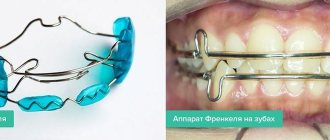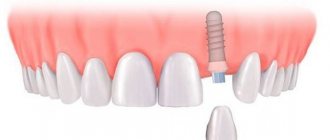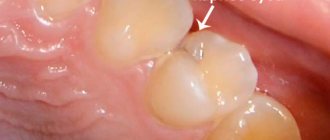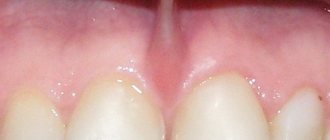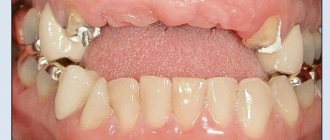Which implants are better for complete edentia?
The quality of dental implants is evidenced by their place in the ranking of popular dental products. The leading positions in such ratings remain with titanium rods manufactured in the USA and European countries.
The most popular dental structures in the world are Swiss Nobel Biocare and Straumann, American 3i Biomet, Zimmer and BioHorizons, Swedish Astra Tech.
In Russia, among the participants in these ratings, implants from Astra Tech, Straumann, and Nobel Biocare are the most in demand.
Strengthening and whitening
In addition to radically changing the appearance with the help of veneers, the world of dentistry has developed many procedures that can strengthen the enamel, making it more stable and brighter.
Article on the topic
Hollywood smile: how to make teeth snow-white at home
Remineralizing therapy is a procedure by which the enamel is saturated with useful substances: fluoride, calcium, phosphorus. This procedure allows you to “fill” microcracks and prevent the development of caries. If the enamel is weak, it will have to be done regularly, at least once a year. Fortunately, you will not experience any discomfort during the process: the doctor will pour a gel containing the necessary substances into a plastic mouth guard, and you will have to sit in this mouth guard for about half an hour. Voila - and your teeth become stronger!
Teeth whitening is not as beneficial a procedure as the one described above. But it gives a good visual effect. As part of the procedure, the enamel is treated with a product based on carbamide peroxide. The catalyst for this substance can be, for example, a laser or ultraviolet light. Remember that this substance negatively affects the enamel, so if it is already destroyed, the doctor will not be able to perform the procedure. You will have to first strengthen the enamel (for example, by saturating it with fluoride), and only then start lightening.
Home whitening - it can be done using the same carbamide peroxide based products. In products for home use, the concentration of aggressive substances is lower than in professional ones. Do not overuse this type of whitening and regularly visit your dentist to monitor the condition of the enamel. In addition, it is not recommended to regularly use whitening pastes. All of them contain abrasive particles that create microcracks in the enamel. The maximum period for using a whitening paste is one month, then it should be changed to a less aggressive one.
How to choose toothpaste? Dentist recommendations
Read more
Implantation methods
How to install supporting elements using a two-stage method
Classical implantation is a popular and reliable method of implanting an artificial root into the jawbone. Tooth restoration takes place in two stages:
- Installation of the rod into the bone.
- Installation of a crown after complete healing of the structures.
The process of tooth restoration using the two-stage method consists of several stages:
- Preparation . Includes diagnostic procedures for contraindications and determination of the anatomical features of the dental system. Sanitation of the oral cavity is carried out. Preparatory procedures for implantation can take from several days to a month.
- Jaw bone augmentation (according to indications). The operation to increase the missing volume lasts no more than a few hours. It takes about 5 months for tissue restoration.
- Implant installation. The soft tissue is peeled off and the bone is drilled to form a bed. After installing the implant, a plug is screwed into its open part, and the gum is returned to its original position and sutured. It takes 4 months for the artificial root to fully engraft on the lower jaw, and six months on the upper jaw.
- Prosthetics. After restoration of damaged tissues and healing of the rod, prosthetics are performed. For this purpose, the integrity of the gum is again violated and the plug is removed, and an abutment is installed in its place. After taking impressions and making a crown, it is fixed with cement.
Two-stage method of dental restoration
The main advantage of the classical method is reliability and minimal risk of bacteria entering the wound. The disadvantage is the delayed aesthetic result; the crown is placed no earlier than 6 months later.
Immediate Load Installation
If necessary and there are no contraindications, a technique with immediate loading is used, that is, the prosthesis is put on immediately after implantation of the titanium rod. A non-separable dental structure is installed - the abutment and the implant are connected to each other.
Single-stage implantation with immediate loading is often combined with tooth extraction (simultaneously) and involves the following steps:
- Preparation . Includes an examination of the oral cavity for dental diseases, a general assessment of the patient’s health, and 3D computer modeling to determine where the rods will be implanted.
- Tooth extraction and implant installation . After the tooth is removed, a titanium rod is inserted into the resulting hole. Anesthesia is performed by administering local (primarily) or general anesthesia. This approach is less traumatic in contrast to the two-stage option. A protruding part of the implant remains above the gum, on which a temporary prosthesis can be installed that can restore the aesthetics of the dentition.
- The permanent crown is placed after complete healing of the structures - after 4-6 months.
The advantage of the method is a quick aesthetic result. Experts attribute the disadvantages to the high risk of pathogenic microorganisms entering bone and soft tissue.
Computer 3D reconstruction of the patient’s upper jaw before implantation
Artistic restoration of teeth
Unlike simple restoration, artistic, or cosmetic, direct dental restoration in dentistry solves exclusively aesthetic problems. Irregular shape, insufficient length or size of a tooth can be corrected using this technique. Dental chips and various defects resulting from trauma are also problems that can be solved by artistic dental restoration. In addition, with the help of restorative bleaching, you can correct teeth whose unaesthetic color cannot be changed using standard techniques. Gaps between teeth are also the most common problems that can be solved by artistic restoration of the front teeth.
The technology described is an exclusive, high-cost service that is not offered in all dental clinics in Moscow . For such delicate work, the dentist requires not just skill, but real talent. He must have the technique of layering various materials to achieve a transparent effect. Artistic dental restoration is partly an alternative to indirect dental restoration, which is carried out using inlays, crowns and restoration with veneers or the installation of lumineers, but only for certain indications.
How many implants are needed to install dentures?
Full installation - is it possible to replace all teeth with implants?
A titanium rod is placed in place of each lost unit. Up to 14 units must be installed on the upper and lower jaw . Sometimes - 12 (second molars are ignored). After installation, a separate crown is placed on each of them.
Full implantation is the best way to restore teeth from an aesthetic and functional point of view. However, this technique has contraindications - a large number of implants cannot be implanted if the volume of the jaw bone is insufficient.
Number of implants when installing a bridge
This method is identical to classic bridge prosthetics, only the support is not healthy teeth, but titanium rods. Dental product resource quantities may vary. On average, 7–10 are implanted into the lower jaw , and 6–8 into the upper jaw . Installing a fixed bridge is the best option for complete edentia, plus it is cheaper.
Implantation of the upper and lower jaw according to the All-on-4 and All-on-6 protocol
These methods were invented by the Swiss company Nobel Biocare. It is suggested to install a fixed prosthesis in case of loss of all teeth or partial edentia on 4 (with All-on-4 implantation) or 6 implants (with All-on-6 implantation).
Reliability of fastening of the prosthesis is ensured by the special arrangement of the rods - 2 are installed in the anterior part of the dentition, and 2 or 4 on the sides at an angle of 30-45°. Within a few hours after implantation, a permanent temporary prosthesis is installed, which will be replaced with a permanent one in 3-6 months.
“All on Four” and “All on Six” technologies are successfully used in cases of small bone volume, proximity of nerves, and the maxillary sinus.
Removable denture with a minimum number of supports
Removable denture with a beam fixation method.
If it is impossible to implant even 4 implants, a minimum number of dental structures - two or three . Ball-shaped abutments are installed on top of the implants. This allows you to securely fasten the removable denture, and at the same time it is easy to remove for hygienic procedures.
The beam method of fixation is also used. The beam, connecting the prosthesis with the implant, provides a more durable fastening in comparison with spherical abutments and promotes uniform distribution of the chewing load.
Installation of dentures on mini-implants
Implantation using mini implants
Installation of mini-implants when there is insufficient bone volume and it is impossible to build it up. Mini-rods are identical in structure and shape to classic models. The difference is in size, the diameter of standard structures is 3.5-5 mm, length is at least 1.5 cm, mini versions are less than 3.5 mm in diameter, up to 1.4 cm in length. Suitable only for holding removable dentures.
Mini-implants differ in the way they are attached to the orthopedic structure - they have a round head surrounded by a rubber ring. The principle of operation of the fastener is similar to a button on clothing. For attachment it is necessary to insert 4-6 mini-implants.
For implantation, a minimally invasive method is chosen, which significantly reduces the time of implantation, trauma and the rehabilitation period. But mini-implants have a short service life (no more than 10 years).
Methods of fixing dentures on implants
Removable dentures installed when all teeth are lost are quite difficult to fix; the lower jaw especially often falls out during eating and talking. The solution to the problem was fixing artificial teeth on titanium rods.
The implant with a removable prosthesis is secured with a micro lock - one half of it is placed on the implant, and the other on the prosthesis, which are connected and snapped into place.
There are two main methods of fixation:
- Push-button type . The protruding part of the implant is made in the form of heads. At the bottom of the prosthesis there are recesses corresponding to the heads of the implants, where micro locks are attached. When putting on the prosthesis, the head falls into the micro lock, the prosthesis is firmly held on the jaw. You can remove it with a certain movement. To secure the structure on the upper jaw, a minimum of 3 implants are required, but 4 are better. On the lower jaw, 3 and 2, respectively. When a minimum number of titanium roots are implanted, the prosthesis will hold securely, however, in the distant parts of the jaw, minor balancing is possible.
- Beam type . At least 3 implants are implanted into the jaw, with a metal beam placed between them. In a removable denture, a specially shaped recess is made under the beam. With this type of attachment, it is necessary to implant at least 3 implants in the upper and lower jaw, but it is best to install 4.
In the photo: push-button and beam type of prosthesis fixation
Manufacturer and clinic guarantee for dental restoration
After implantation, as after any surgical procedure, various complications may arise. One of these negative consequences is rejection, in which the artificial root falls out or has to be removed. Rejection can be caused by unexpected reactions of the body, errors made by a specialist during surgery, or poor quality of the implant.
If in the first case, the patient could refuse the procedure, then in the other two situations, re-implantation is possible free of charge. To do this, it is necessary that the contract signed by the dental clinic include such items as the manufacturer’s warranty and the clinic’s guarantees.
The manufacturer's warranty applies only to the quality of the structures, and can be 10-20 years , some give a lifetime guarantee. Re-implantation at the company's expense is carried out only when rejection occurs due to inadequate quality of the implant.
The dentistry guarantee for the work of an implantologist is only 2-3 years . Free re-implantation will be carried out if it is proven that the rejection was due to the fault of the surgeon.
It is important for the patient to follow all recommendations, otherwise guarantees may be void.
Composite dental restoration
Even the most ordinary filling should be beautiful. Therefore, direct composite dental restoration in dentistry is increasingly becoming an alternative to conventional filling and is actively used as the final stage in the treatment of caries. This technique should be carried out in specially equipped dental offices by specialists with certain qualifications, and using highly aesthetic light-curing composite materials. All this increases not only the quality of dental treatment, but also its cost (prices for dental restoration in Moscow can vary from 1,500 rubles to 50,000 rubles per tooth). But how can an ordinary patient understand how dental restoration with a composite material differs from a traditional filling, and is it worth overpaying for it?
The main difference between composite dental restoration and conventional filling is the final result. The restored tooth becomes identical in color to its natural counterpart. Its natural shape is restored taking into account all anatomical features. If the composite restoration of the anterior teeth is carried out efficiently, the patient will not be able to detect the presence of a filling by touch with his tongue and will not experience the sensation of something foreign in the oral cavity when closing the jaws. The latter aspect is of paramount importance for the normal function of the temporomandibular joint, which is important for the health of not only the oral cavity, but the entire body as a whole.
Photos before and after restoration of anterior teeth with composites
What is the average cost in Moscow?
| Name of service | Cost, rub. |
| Installation of one implant | |
| Alfa Bio (Israel) | 16000 |
| Osstem (Korea) | 20000 |
| MIS (Israel) | 25000 |
| ROOTT (Switzerland) | 25000 |
| Astra Tech (Sweden) | 43000 |
| Straumann (Switzerland) | 51000 |
| Nobel Biocare (Switzerland) | 60000 |
| Prosthetics for complete absence of teeth with a temporary prosthesis | |
| All-on-4 MIS design | 180000 |
| Roott Basal Implants | 295000 |
| Nobel Biocare | 300000 |
| Installation of a permanent bridge | |
| Made of metal-plastic | 110000 |
| Made of metal ceramics | 180000 |
| Made of ceramics (zirconium dioxide) | 250000 |




